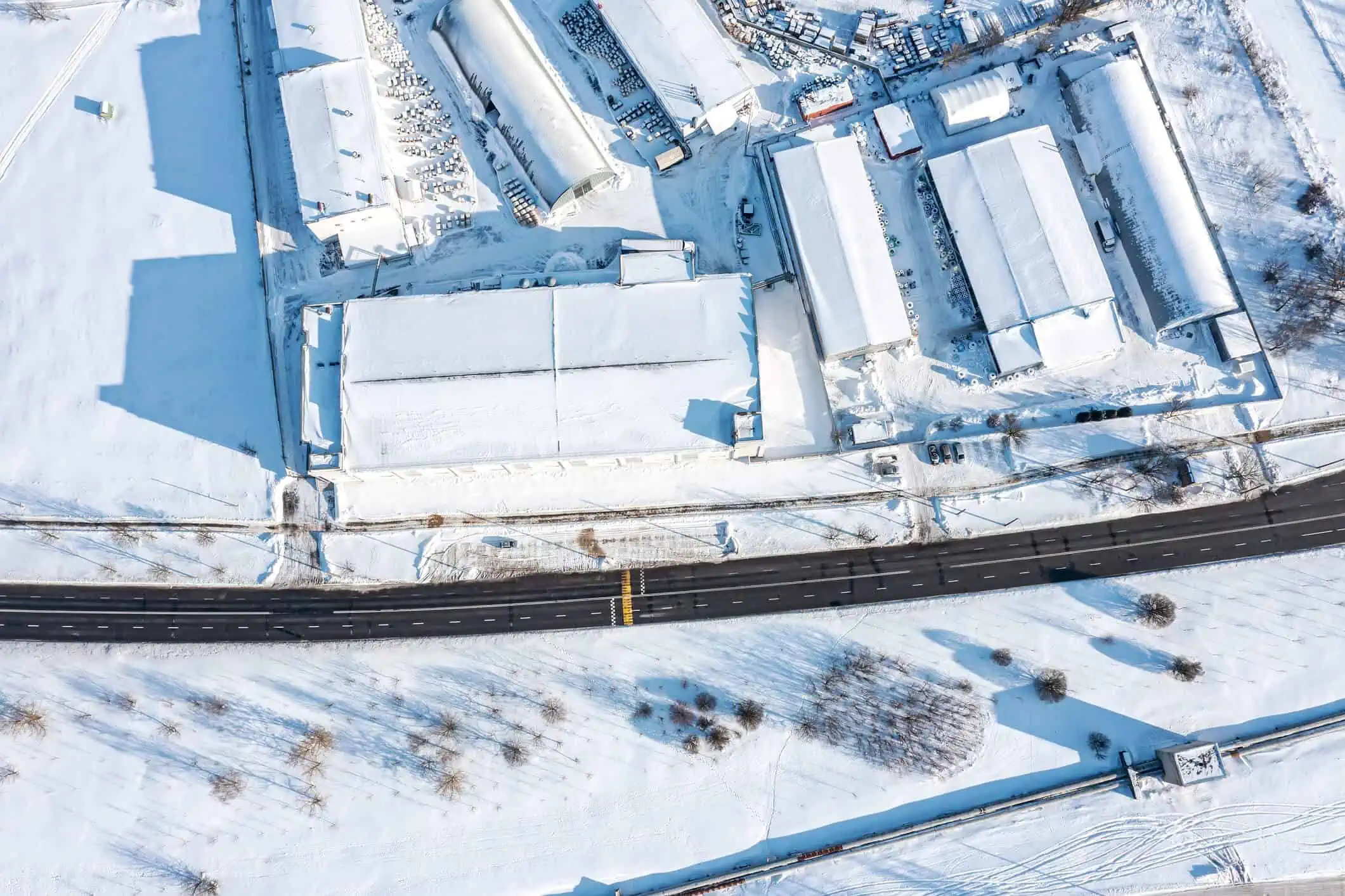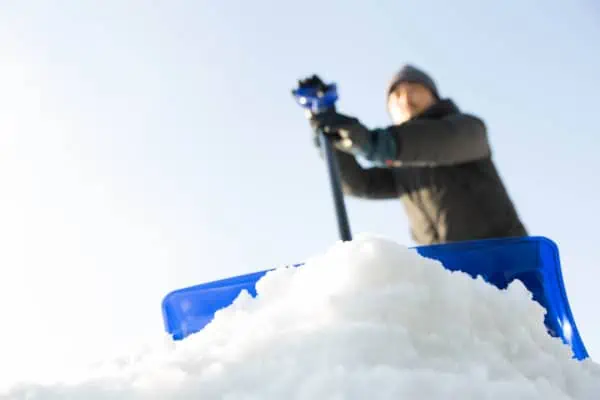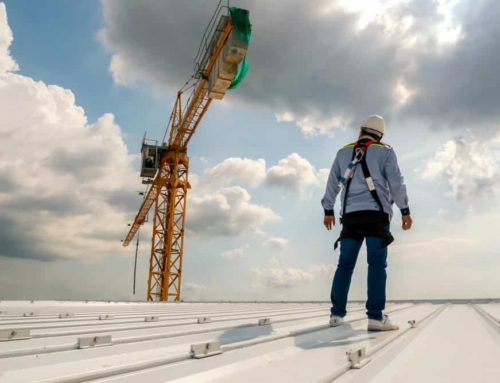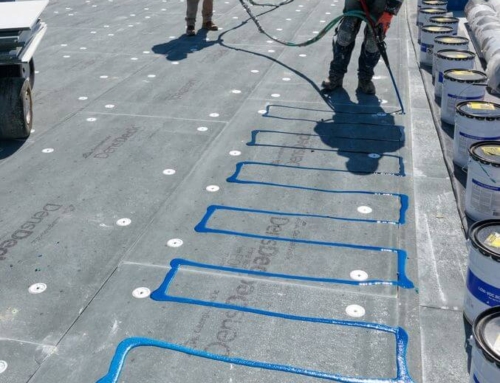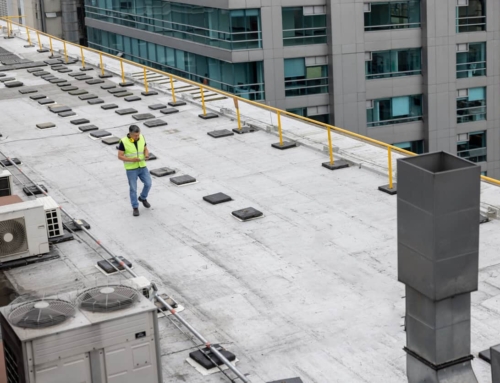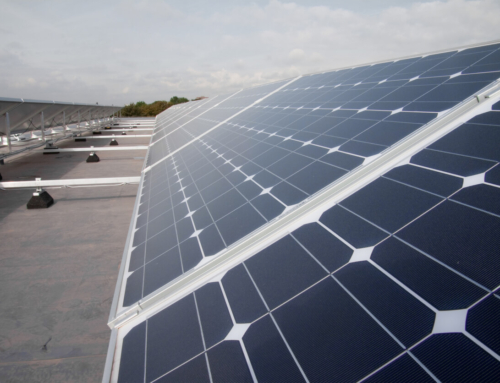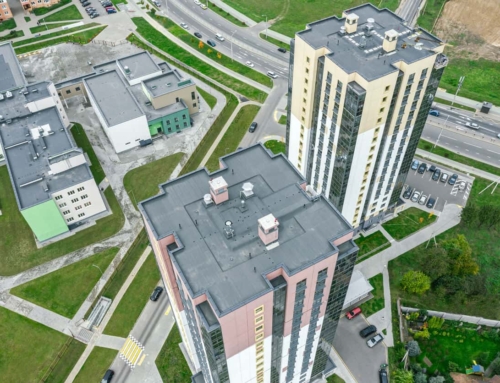The best commercial roofing systems for cold climates provide excellent insulation, durability, and resistance to harsh weather conditions for low-sloped roofs. Let’s take a look at each roofing system for cold climates.
Contents
Things to Consider When Choosing Roofing Materials for Cold Climates
Building owners need to consider the local climate when selecting a roofing material. Here are things to consider when choosing a roof system for a cold environment.
- Cold climate roof systems need to be insulated to reduce energy costs in the winter and prevent ice dams.
- The roof structure needs to support heavy snow and ice.
- The roof surface needs to be watertight to prevent roof leakage.
- The roof coatings must be durable to withstand foot traffic and snow removal tools.
- In cold climates, the roof system must handle thermal expansion and contraction.
- Because commercial roofs in cold climates take a beating, the system must be easy to repair and maintain.
The roofing industry is aware of these needs. Here are some of the best commercial roof systems for cold climates.
Roofing Material for Cold Climates
There are pros and cons for each type of commercial roofing system. Consider these for a new roof project in a cold weather climate.
Built-Up Roofing (BUR)
BUR systems consist of multiple layers of bitumen and reinforcement materials. These roof systems have been around for over a century and are known for offering durability and a thicker roof system with multiple layers to protect the building.
Modified Bitumen Roof
A modified bitumen roof combines asphalt and a unique chemical polymer for flexibility and temperature resistance. It’s applied in multiple layers, and the seams are melted together to form a secure bond. Modified bitumen roof systems are compatible with most types of high-performance roof insulations and have resistance to extreme temperatures.
EPDM (Ethylene Propylene Diene Monomer) Roof
EPDM roofs are single-ply systems that are incredibly flexible and robust. EPDM roofs are made of a synthetic rubber material that can withstand cold temperatures. And the material’s flexibility helps it expand and contract with temperature fluctuations without peeling or cracking.
TPO (Thermoplastic Polyolefin) Roof
Another single-ply system, TPO roofs are made of a membrane with a polyester reinforcement that offers good resistance to cold weather. The material improves energy efficiency and can handle temperature changes without becoming brittle.
PVC (Polyvinyl Chloride) Roof
Another type of thermoplastic single-ply system, PVC roofs are made of a membrane with a polyester reinforcement that offers good resistance to cold weather. PVC roofs also offer excellent chemical resistance properties.
Metal Roofs
Metal roofs are highly durable and can handle heavy snow loads. Also, metal roofing also sheds snow easily and is resistant to ice buildup.
Green Roofs
Green roofs consist of vegetation and a growing system on top of a waterproof membrane. They also help regulate temperature and provide insulation for buildings in cold climates while offering environmental benefits. Ask your commercial roofing contractor about installing solar panels for more ecological benefits.
Asphalt Shingles
Of course, not all commercial buildings have flat roofs. Asphalt shingles, wood shakes, and concrete tile are appropriate for steep roofs in cold climates.
Seek Expert Advice When Selecting a Roofing System for Cold Climates
Consulting with a professional roofing contractor with experience in cold climate installations is highly recommended to ensure you choose the best roofing system. When recommending roofing systems, a roofing contractor will consider the building’s use, the client’s budget, and local and state regulations. All of these roofing systems can include compatible insulation products that will enable you to meet or exceed minimum requirements in your area.
Contact Nations Roof to schedule a consultation and inspection of your commercial building. We will recommend the best brand of roofing system for your unique situation and will help you with maintenance and repairs for the life of your roof.
Key Takeaways About Roof Systems for Cold Climates
- Roofs in cold climates are susceptible to roof damage. Building owners who own property in cold climates are always interested in finding ways to lower utility bills.
- Many roof systems can handle cold weather, including multi-layer and single-ply systems.
- Roof insulations are available that are compatible with each of these system types and will meet your local energy codes.
- Seek the advice of a commercial roofing contractor with experience in cold-weather roofing.

